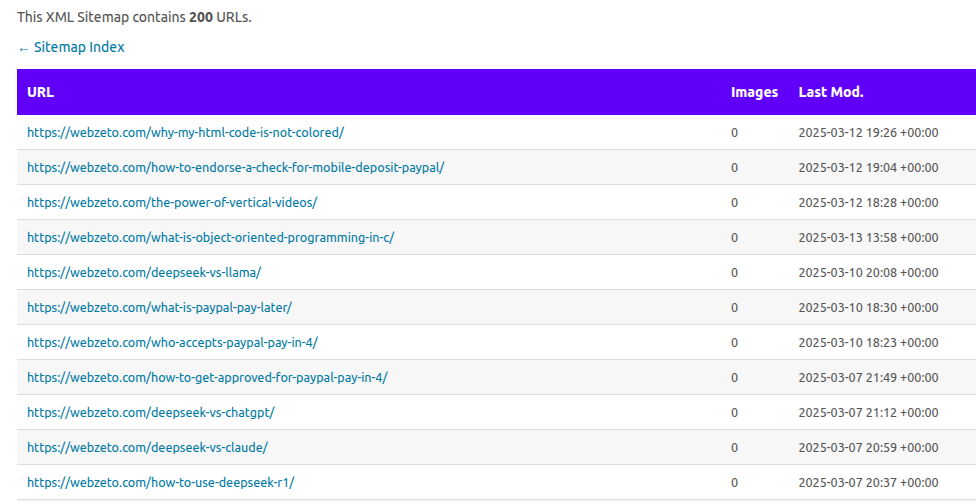One of the areas that provides a ton of benefits for both website owners and website users is search engine optimization. This guide will walk you through what SEO is, its importance, and how you can create an SEO-focused web development approach.
Table of Contents
Table of Contents
What is SEO & Why is It Important in Web Development?
Search engine optimization, or SEO, is the process of structuring your website, from the larger website architecture to text on each page, to be understandable for the search engines. The end goal here is to show the search engines what your website is about, what keywords to display it for, and demonstrate that your website is respectable enough to rank high.
To do this, you’ll need to optimize multiple elements on and off your site in the three crucial areas: technical SEO, on-page SEO, and off-page SEO. Here’s a quick breakdown of what these areas encompass.
- Technical SEO: Optimizing website architecture, security, and performance.
- On-page SEO: Optimizing title tags and other page content for the right keywords.
- Off-page SEO: Building links and online mentions of your site to build website authority.
The technical aspects of your site, like the website architecture, loading speed, and user experience, are the foundation of SEO. Many of those technical aspects are formed at the stage of website development, and changing them afterward can be a problem. That’s why SEO should be one of your points of interest when developing a website.
SEO requires a set of tools to do it right. You’ll need tools for competitor analysis, keyword rank tracking, and technical audits. In terms of technical optimization in particular, SE Ranking SEO API can help you automate regular maintenance and upkeep of website health, as well as cross-reference analytics data with marketing data from third-party platforms.
The main benefit of doing SEO for website owners is that it can help them to:
- Rank higher in search for relevant keywords.
- Draw in more qualified traffic.
- Increase the sales volume.
The main benefit for users is being able to find relevant products on your site.
How Search Engines Work?
Understanding the basic principles of search engine ranking processes can help you build a better SEO strategy. Here’s how it works.
Google typically finds your website and pages on it either by following links from other sites or by using a sitemap file that you upload to Google Search Console or an alternative in another search engine. It’s a file that contains all the important pages of your website, situated at www.yoursite.com/sitemap.xml.

To discover content on your site, search engines use bots or crawlers — algorithms that scan the content of a page and follow links on it to discover other pages. That’s why you don’t want to have any page on your site that’s not linked from another page. Search engine crawlers would have too much trouble discovering it.
When search engine bots crawl your site, they judge it by the content of the page and by how many other pages link to it. The more high-quality pages link to your site, the more authority it has in the eyes of Google.
Then, they save the information about your site to the index, a database Google refers to when deciding how to rank each site.
When deciding what websites to show to each search query, search engines scan this index and evaluate websites by:
- Relevance, as measured by keywords mentioned on the page.
- Website technical health.
- Perceived authority based on online mentions.
Website developers can directly impact many factors that constitute website technical health, like website speed, mobile-friendliness, and crawlability. This guide will focus on elements of SEO that are related to website development.
Practical SEO and Web Development Tips
Let’s take a closer look at six SEO tips most relevant to web development services.
1. Enhancing Website Content
Performance of your website in search depends on both factors that are common across the whole website, like its security certificate, and on factors on each individual page. For most web pages, those factors are images, text, and metadata present on each page.
Metadata in the context of SEO is the title and description tags. These are the short bits of text that you can see in every search result page.

Search engines look at meta title tags first when deciding what the page is about. Add the most relevant and high-volume keywords to these two tags to rank for the right searches.
Both the title and description give users information about the page, often the only information that can prompt them to visit a page or avoid it. Make sure to create a text that can attract customers. Experiment to find a formula that works for you.
The text and content of each page should be optimized for the right keywords and search intent. To optimize a page for a keyword group, add relevant keywords organically throughout the text.
Handling search intent can be a bit more difficult. Analyze what type of content is shown for the keyword you want to target, and look at what information is brought up on these pages. Introduce the same main points to your pages to answer the search intent.
To optimize images for SEO, add a keyword-rich alt text to each and use a readable file name. Consider creating multiple versions of images in different sizes. Serve images of different sizes depending on the users’ devices to improve loading speed.
2. Creating an SEO-Friendly Website Structure
The proper structure and hierarchy of your website lead to improved user experience and help search engine bots discover content on your site.
All website content is organized as a hierarchy of folders and subfolders. Your job as a web developer is to organize it in a way that helps both users and search engines.
A poor way to organize website content is by using a large number of irrelevant categories and subcategories. If your content is placed in categories like “yoursite.com/2025-07-05/content-type-1/ugh1356losud/page.html” it is hard for users and search engines to understand what they’re looking at.
Here are a few best practices to optimize website performance.
- Use as few categories and subcategories as you can.
- Make sure there are no pages that take more than five clicks to reach or are more than five subcategories from the main page.
- Name categories semantically; use words and phrases instead of strings of meaningless symbols.
- If you have many subcategories, for instance, for product filters, consider using query parameters instead.
- You can block some query parameters from indexing, like pricing filters.
- Add the most important pages to the sitemap.
Add several ways to navigate the website. At the very least, you should have a navigation menu that spans across the whole website and breadcrumbs navigation on each page.

Source: Adidas
This type of navigation is easy to implement and lets users jump between category and subcategory pages.
3. Maintaining Clean and Organized Code
Clean and quick code helps to minimize the amount of resources users’ browser has to upload and decrease loading time. Since website speed optimization and visual stability of a page are ranking factors as well, this isn’t just a proper programming practice; it’s an SEO practice as well.
Here are a few tips for writing code for website performance optimization.
- Prioritize loading the most essential user-facing elements of the site.
- Resolve issues with running JavaScript that can slow down the site.
- Avoid linking to multiple stylesheets and libraries if possible.
- Minify the code.
4. Crafting User-Friendly URLs
Just like category pages, each page on the site should be named in a readable way. A URL slug that reads “yoursite.com/product-category-1/product11341516” doesn’t tell much about the page to either the user or the search engine.
Instead, use words and phrases to explain what the page and the category are. Use hyphens and try to keep the page URL under five words. Use a keyword if you can.
Here are a few examples of a good URL slug.
- yoursite.com/services/landscaping
- yoursite.com/mens-wear/trousers
- yoursite.com/samba-og-shoes-kids/
5. Boosting Website Speed
A website that loads fast improves UX and can have an effect on search engine rankings. Here are a few strategies to improve it.
- Writing well-optimized code.
- Minifying and compressing code.
- Lazy-loading resources.
- Improving render-blocking JavaScript code.
- Loading a mockup of a page before the content is loaded.
- Compressing images and serving different types of images for different devices.
- Using a hosting with a CDN.
6. Optimizing the Website for Mobile Devices
More than half of worldwide internet traffic comes from mobile devices. This puts the pressure on the development teams to prioritize mobile platforms when creating business websites. Poor mobile performance can be a negative ranking factor.
Here are a few strategies you can use to improve mobile performance.
- Use a responsive design framework.
- Use mobile-friendly navigation systems.
- Avoid using pop-ups or make them mobile-friendly.
- Display images of a smaller size, and consider avoiding displaying videos.
Test performance on multiple devices to make sure it works as intended.
Summary
Web development involves designing websites that can help users find what they’re looking for and website owners. SEO is an area of web development that can help both.
SEO requires a lot of ongoing work, but its foundations are laid when a site is designed and created. Follow the best practices from this article to make a website that can be discovered by the search engines and ranked well.














